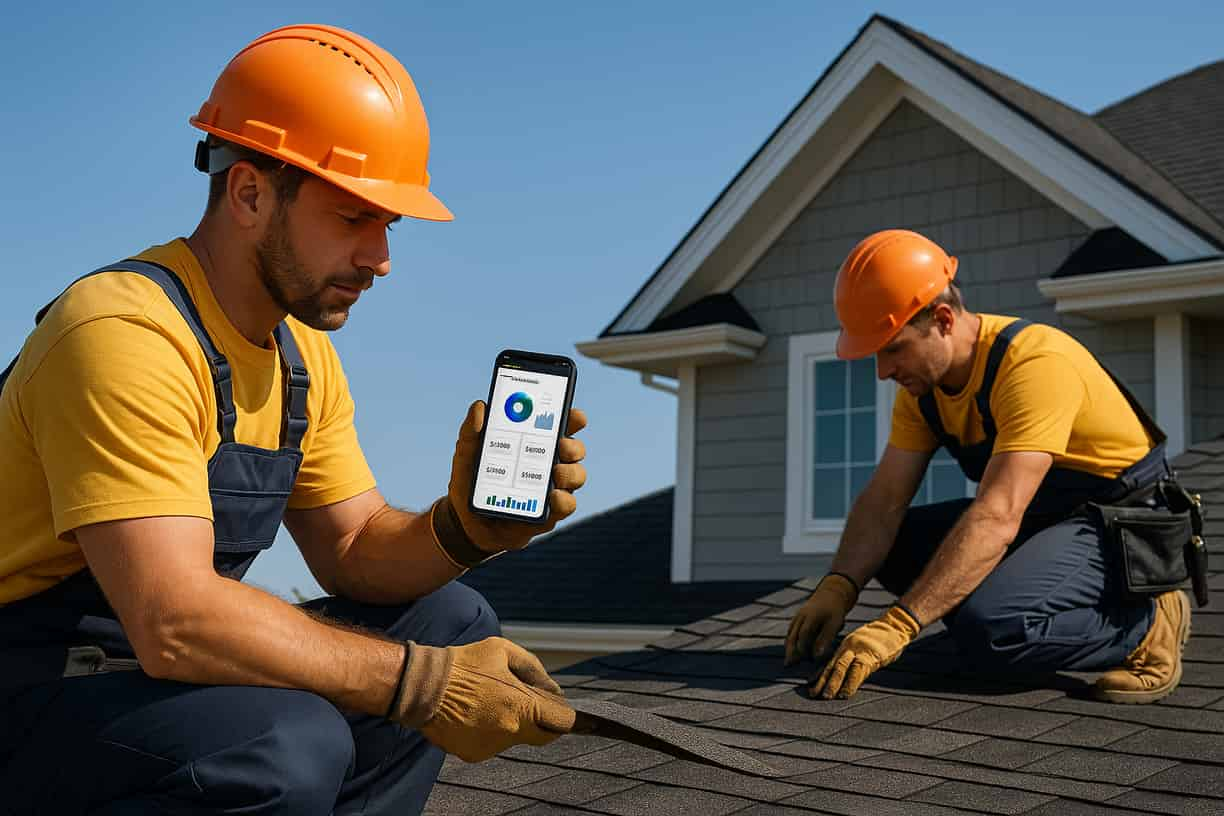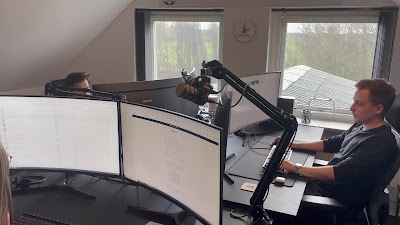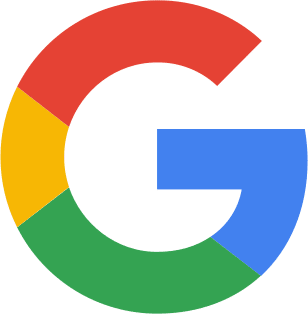Mark Thompson faced a critical decision that would determine his roofing company’s growth trajectory. With a $2,500 monthly advertising budget, he could either invest in Google Ads for immediate lead generation or Facebook Ads for long-term brand building. His choice would make the difference between feast or famine.
Three months later, Mark’s competitor chose the opposite platform. Mark’s Google Ads generated 18 emergency repair leads but cost $145 each. His competitor’s Facebook Ads produced 35 leads at $71 each, but took longer to convert into actual customers.
This scenario plays out daily across the roofing industry. Contractors struggle to choose between Facebook or Google Ads without understanding how each platform serves different business needs. Making the wrong choice wastes precious marketing budgets and missed growth opportunities.
Both platforms can generate excellent results for roofing companies, but they work differently and serve distinct purposes in your marketing strategy. Understanding when to use Facebook or Google Ads determines whether your advertising investment drives sustainable business growth or disappoints with poor returns.
This comprehensive analysis helps you choose between Facebook or Google Ads based on your specific business goals, budget constraints, and market conditions. You’ll learn exactly which platform fits your roofing company’s needs and how to maximize results from your chosen approach.
Understanding the Fundamental Differences
How Each Platform Captures Customers
The core difference between Facebook or Google Ads lies in how they connect with potential roofing customers. Google Ads respond to existing demand when customers actively search for roofing services. Facebook Ads create demand by reaching homeowners before they realize they need roofing work.
Google Ads capture customers at the moment of need when they search terms like “emergency roof repair” or “roofing contractor near me.” These searchers have immediate problems and want solutions quickly. They’re ready to call contractors and often hire within days of their initial search.
Facebook Ads reach homeowners during their leisure browsing time as they scroll through social media content. These potential customers aren’t actively looking for roofers but might need services eventually. The platform builds awareness and relationships that convert when roofing needs arise.
Intent levels differ dramatically between platforms. Google searchers demonstrate high intent through their specific keyword searches. Facebook users show lower immediate intent but represent larger pools of potential future customers.
Customer mindset affects how each platform performs for roofing companies. Google users are problem-solving mode, looking for immediate solutions. Facebook users are in social mode, more receptive to educational content and relationship building.
Conversion timelines reflect these mindset differences. Google Ads often generate leads that convert within hours or days. Facebook Ads typically require longer nurturing periods before converting into paying customers.
Targeting Capabilities Comparison
Choosing between Facebook or Google Ads often depends on which platform’s targeting capabilities better match your ideal customer profile and marketing objectives.
Google Ads target based primarily on search keywords and basic demographics. You can reach people searching for specific roofing terms in particular locations, but targeting options remain limited compared to Facebook’s extensive data.
Facebook Ads offer sophisticated targeting based on demographics, interests, behaviors, life events, and social connections. You can target homeowners by age, income, property details, recent moves, and even friends’ contractor hiring patterns.
Geographic precision varies between platforms. Google Ads target based on where people search, which usually corresponds to where they need services. Facebook Ads target based on where people live or have been recently, providing similar geographic accuracy.
Demographic depth favors Facebook significantly. While Google provides basic age and gender targeting, Facebook offers detailed demographic profiles including education, job titles, relationship status, and life stage information.
Behavioral targeting represents Facebook’s strongest advantage. The platform tracks user interactions, purchases, and interests to identify people likely to need roofing services based on their online behavior patterns.
Interest-based targeting allows Facebook to reach homeowners interested in home improvement, weather preparedness, or property maintenance topics. Google lacks this interest-based targeting capability.
Cost Structure Analysis
The cost comparison between Facebook or Google Ads reveals significant differences that impact which platform fits your budget and ROI expectations.
Average costs per click vary dramatically between platforms. Google Ads typically cost $25 to $75 per click for roofing keywords in competitive markets. Facebook Ads usually cost $2 to $8 per click, allowing broader reach with smaller budgets.
Competition levels drive these cost differences. Google Ads face direct bidding competition for roofing keywords among local contractors. Facebook Ads compete in broader interest categories with less intense bidding pressure.
Budget requirements reflect cost differences significantly. Google Ads often need $2,500 to $5,000 monthly budgets for meaningful results in competitive markets. Facebook Ads can start effectively with $800 to $2,000 monthly investments.
Lead costs depend on conversion rates and competition. Google Ads might generate leads at $75 to $200 each in competitive markets. Facebook Ads typically produce leads at $50 to $150 each, though lead quality may vary.
Return on investment calculations must consider customer lifetime value and conversion rates. Google leads often convert faster but cost more. Facebook leads cost less but may require longer sales cycles.
Seasonal pricing affects both platforms differently. Google Ads see dramatic cost increases during storm seasons when demand spikes. Facebook Ads maintain more stable pricing throughout the year.
Strategic Use Cases for Each Platform
When Google Ads Excel for Roofers
Google Ads perform best for roofing companies in specific situations where immediate lead generation and high-intent customers provide the greatest value for advertising investment.
Emergency service providers benefit enormously from Google Ads since homeowners with urgent roofing problems search immediately for solutions. Emergency keywords like “roof leak repair” and “storm damage roofer” capture customers who need immediate help and often pay premium prices.
Established companies with strong conversion processes maximize Google Ads effectiveness. Businesses that can handle high lead volumes efficiently and convert prospects quickly justify the higher costs through superior customer acquisition rates.
Competitive markets where brand recognition matters favor Google Ads. When customers search for roofing services, appearing prominently in search results builds credibility and captures market share from competitors.
High-value service focus makes Google Ads worthwhile for companies specializing in roof replacements, commercial work, or other expensive projects. Higher project values justify increased advertising costs more easily than small repair work.
Limited service areas allow Google Ads budgets to generate sufficient volume for optimization. Companies serving one to three cities can afford the geographic coverage needed for effective Google Ads campaigns.
Immediate revenue needs justify Google Ads investment when companies need fast lead generation to maintain cash flow or meet growth targets. The platform delivers leads quickly compared to Facebook’s longer conversion timelines.
When Facebook Ads Work Better
Facebook Ads provide superior results for roofing companies in situations where relationship building, brand awareness, and cost efficiency matter more than immediate lead generation.
Brand building objectives favor Facebook Ads since the platform excels at reaching large audiences and creating awareness among potential future customers. Visual content showcases work quality while building recognition and trust.
Budget-conscious companies find Facebook Ads more accessible since lower costs per click allow broader reach and more testing opportunities. Smaller roofing businesses can compete effectively without massive advertising budgets.
Long-term growth strategies benefit from Facebook’s relationship-building capabilities. Companies focused on sustainable growth rather than immediate results often achieve better long-term ROI through Facebook advertising.
Visual service differentiation works perfectly on Facebook since before-and-after photos, time-lapse videos, and project showcases engage users effectively. Roofing companies with compelling visual content excel on the platform.
Community engagement opportunities allow Facebook Ads to build local reputation and word-of-mouth marketing. Social sharing and community connections amplify advertising reach organically.
Educational content strategies work well on Facebook where users expect valuable information rather than direct sales pitches. Companies that create helpful roofing content build authority and trust.
Hybrid Strategies That Maximize Results
Many successful roofing companies discover that combining Facebook and Google Ads creates synergistic effects that outperform either platform alone.
Sequential targeting uses Facebook Ads for initial awareness building and Google Ads for conversion capture. Potential customers see Facebook content first, then convert through Google searches when they need services.
Budget allocation strategies distribute advertising investment based on seasonal demand and business goals. Increase Google Ads spending during peak seasons while maintaining consistent Facebook presence for long-term growth.
Audience data sharing between platforms improves targeting effectiveness. Use Facebook audience insights to inform Google Ads keyword strategies and vice versa for comprehensive customer understanding.
Remarketing integration creates powerful follow-up sequences. Target Facebook users who visited your website through Google Ads, or retarget Google searchers with Facebook content to stay top-of-mind.
Content repurposing maximizes creative investment by adapting successful Facebook content for Google Ads landing pages and using Google search insights to inform Facebook content creation.
Performance comparison enables continuous optimization by testing similar audiences and messages across both platforms to identify which performs better for specific objectives.
Case Study: Thompson Roofing’s Platform Decision
The Business Context
Thompson Roofing operated successfully in Denver for six years, specializing in residential roof replacements and storm damage repair. Owner Sarah Thompson faced stagnating growth and wanted to expand beyond her referral network to reach more homeowners proactively.
Sarah’s challenges included seasonal revenue fluctuations that made business planning difficult, increasing competition from national roofing chains with larger marketing budgets, limited visibility among homeowners who hadn’t experienced roofing problems, and dependence on unpredictable referral patterns for new customer acquisition.
With a $3,000 monthly advertising budget, Sarah needed to choose between Facebook or Google Ads for maximum impact. Her decision would determine whether she could achieve her goal of 50% revenue growth within twelve months.
Market research revealed high competition for Google Ads roofing keywords in Denver, with costs ranging from $45 to $85 per click. Facebook Ads appeared less crowded but required longer conversion timelines that might not meet Sarah’s immediate growth needs.
Sarah decided to test both platforms systematically rather than choosing based on assumptions. She allocated $2,000 monthly to Google Ads and $1,000 to Facebook Ads for six months to determine which platform delivered better results for her specific business.
Implementation Strategy
Google Ads implementation focused on emergency repair keywords and roof replacement terms within a 30-mile radius of Sarah’s location. She targeted homeowners actively searching for roofing services with immediate needs and larger project budgets.
Campaign structure included separate ad groups for emergency repairs, roof replacements, and storm damage services. Each ad group featured specific landing pages designed to convert searchers into leads quickly and efficiently.
Keyword selection emphasized high-intent terms like “Denver roof replacement,” “emergency roof repair,” and neighborhood-specific searches. Sarah avoided broad terms that attracted price shoppers and DIY researchers who rarely convert.
Facebook Ads strategy targeted homeowners aged 35 to 65 with household incomes above $75,000 in her service areas. She focused on interests related to home improvement, weather preparedness, and property maintenance.
Creative development for Facebook emphasized before-and-after project photos, educational content about roofing maintenance, and seasonal preparation tips. Sarah positioned herself as a trusted local expert rather than just another contractor.
Budget management allocated Google spending during business hours when Sarah could respond to calls immediately. Facebook budgets remained consistent throughout the day to build brand awareness continuously.
Platform Performance Comparison
After three months of parallel testing, clear performance differences emerged between Facebook and Google Ads for Thompson Roofing’s specific situation and goals.
Google Ads generated 42 qualified leads at an average cost of $143 each. Lead quality was excellent, with 38% converting into customers and average project values of $12,500. Response times were critical since most leads needed immediate attention.
Facebook Ads produced 67 leads at an average cost of $45 each. However, only 18% converted into customers initially, though ongoing follow-up improved long-term conversion rates to 28%. Average project values were similar at $11,800.
Conversion timeline differences were significant. Google leads typically hired within one week of initial contact. Facebook leads often required two to three months of nurturing before converting into customers.
Customer quality varied between platforms. Google customers tended to have urgent needs and less price sensitivity. Facebook customers were more planned in their approach and often gathered multiple estimates.
Seasonal performance showed Google Ads excelling during storm seasons when emergency demand peaked. Facebook Ads maintained consistent performance throughout the year regardless of weather events.
Cost efficiency calculations revealed Facebook Ads generated lower cost per lead but similar cost per customer due to conversion rate differences. Google Ads provided faster cash flow but required larger budgets for sustained performance.
Strategic Decision and Results
Based on six months of testing data, Sarah chose a hybrid approach that leveraged each platform’s strengths rather than selecting just one for her advertising investment.
Google Ads allocation received $1,800 monthly during peak seasons when emergency demand justified higher costs. Sarah focused on immediate revenue generation and emergency response positioning during these periods.
Facebook Ads received consistent $1,200 monthly investment for year-round brand building and relationship development. This platform maintained visibility during slow seasons and built a pipeline of future customers.
Integrated strategy used Facebook content to warm prospects before they searched Google, creating a conversion funnel that improved overall advertising efficiency. Customers often saw Facebook content before converting through Google searches.
Results exceeded expectations with combined platform approach generating 95 qualified leads monthly at an average cost of $95 each. Overall conversion rates improved to 32% as prospects became familiar with Thompson Roofing before needing services.
Revenue growth achieved Sarah’s 50% annual target within eight months through sustained lead generation and improved conversion rates. The hybrid approach provided both immediate results and long-term growth foundation.
Brand recognition increased significantly as customers frequently mentioned seeing Thompson Roofing content on both platforms before hiring. This multi-touch exposure built trust and credibility that competitors lacked.
Key Success Factors
Several critical factors contributed to Thompson Roofing’s successful platform selection and implementation strategy.
Testing methodology provided objective data rather than assumptions about platform effectiveness. Sarah’s systematic approach prevented costly mistakes and optimized budget allocation based on actual performance.
Platform-specific optimization recognized that Facebook and Google Ads required different strategies, content, and expectations. Sarah avoided the mistake of using identical approaches across platforms.
Long-term perspective balanced immediate lead generation needs with sustainable growth objectives. The hybrid strategy addressed both short-term revenue requirements and long-term market positioning.
Customer journey understanding helped Sarah recognize that many customers interact with multiple touchpoints before hiring contractors. Her integrated approach supported this natural buying process.
Seasonal adaptation optimized platform usage based on predictable demand patterns in the roofing industry. This flexibility maximized advertising efficiency throughout the year.
Conversion process optimization ensured that increased lead generation translated into actual revenue growth. Sarah improved her sales process to handle leads from both platforms effectively.
Decision Framework for Platform Selection
Assessing Your Business Needs
Choosing between Facebook or Google Ads requires honest assessment of your roofing company’s current situation, goals, and capabilities to handle different types of advertising approaches.
Business maturity affects platform choice significantly. Established companies with proven sales processes and sufficient cash flow can maximize Google Ads’ immediate lead generation. Newer companies might benefit from Facebook’s relationship-building approach.
Revenue timeline needs determine platform priority. Companies needing immediate revenue to meet obligations or growth targets should prioritize Google Ads. Those focused on sustainable long-term growth can emphasize Facebook advertising.
Service area size impacts platform effectiveness differently. Companies serving large metropolitan areas often need Google Ads’ volume capabilities. Those serving smaller markets might find Facebook more cost-effective for comprehensive coverage.
Competition levels in your market affect platform viability. Highly competitive Google Ads markets might favor Facebook for cost efficiency. Less competitive areas might allow Google Ads success with reasonable budgets.
Team capabilities influence platform choice since Google and Facebook Ads require different management skills and time commitments. Assess your team’s ability to handle each platform’s requirements effectively.
Budget constraints often determine platform options. Google Ads typically require larger minimum investments while Facebook Ads accommodate smaller budgets better. Choose the platform you can fund adequately for meaningful results.
Market Condition Analysis
External market factors significantly influence whether Facebook or Google Ads will perform better for your specific roofing business and service area.
Local competition intensity affects platform choice substantially. Markets with numerous contractors advertising aggressively on Google might offer Facebook opportunities with less competition and lower costs.
Seasonal demand patterns in your area influence platform effectiveness. Regions with extreme seasonal variations might benefit from Google Ads during peak periods and Facebook during slower times.
Customer demographics impact platform selection since different age groups and income levels prefer different platforms. Research your ideal customer’s online behavior patterns before choosing.
Economic conditions affect advertising platform performance differently. Economic uncertainty might favor Facebook’s lower costs while strong economies might justify Google’s premium pricing for immediate results.
Weather patterns and natural disaster frequency influence emergency demand levels that favor Google Ads. Areas with frequent storms generate more urgent searches that Google captures effectively.
Regional internet usage patterns affect platform reach and effectiveness. Rural areas might see different platform preferences than urban markets, influencing your choice accordingly.
Budget Allocation Guidelines
Effective budget allocation between Facebook and Google Ads requires understanding minimum viable investments and expected returns for each platform.
Minimum effective budgets differ substantially between platforms. Google Ads typically need $1,500 to $3,000 monthly for meaningful roofing campaign performance. Facebook Ads can start effectively with $800 to $1,500 monthly.
Testing budget allocation should dedicate sufficient resources to each platform for conclusive results. Allocate at least three months and $3,000 total per platform for reliable performance assessment.
Scaling strategies differ between platforms. Google Ads require careful scaling to maintain cost efficiency. Facebook Ads typically scale more smoothly with gradual budget increases.
ROI expectations should reflect each platform’s strengths and timelines. Google Ads might achieve profitability faster but plateau sooner. Facebook Ads often take longer to show results but offer better long-term scalability.
Seasonal budgeting optimizes platform usage based on predictable demand patterns. Increase Google spending during peak seasons while maintaining consistent Facebook investment for year-round presence.
Competitive response budgeting accounts for market changes and competitor activities. Maintain flexibility to shift platform emphasis based on competitive pressures and opportunities.
Advanced Integration Strategies
Sequential Campaign Development
Sophisticated roofing companies often use sequential campaigns that guide potential customers through awareness, consideration, and decision stages using both Facebook and Google Ads strategically.
Awareness stage campaigns use Facebook Ads to introduce your roofing company to homeowners before they realize they need services. Educational content, seasonal tips, and project showcases build recognition and trust.
Consideration stage targeting reaches people who engaged with awareness content but haven’t converted yet. Use Facebook retargeting and Google Ads to stay visible as these prospects research roofing options.
Decision stage campaigns capture high-intent searchers through Google Ads while using Facebook retargeting to reinforce your value proposition. This multi-touch approach improves conversion rates significantly.
Customer journey mapping identifies touchpoints where each platform contributes most effectively. Understanding how customers progress from awareness to hiring helps optimize platform usage and budget allocation.
Attribution modeling tracks how Facebook and Google Ads work together to generate customers. Many conversions involve multiple touchpoints across platforms, making attribution analysis crucial for optimization.
Lifecycle management uses different platforms for customer retention and referral generation. Facebook excels at maintaining relationships with past customers who might need future services or refer others.
Cross-Platform Data Utilization
Smart roofing companies leverage data from both Facebook and Google Ads to improve overall advertising effectiveness and customer understanding.
Audience insights from Facebook inform Google Ads keyword strategies and landing page development. Understanding customer interests and behaviors improves targeting across platforms.
Search query data from Google Ads reveals customer language and concerns that improve Facebook content creation. Real search terms provide authentic voice and messaging for social media advertising.
Conversion data analysis identifies which platform generates higher-value customers and better lifetime value. This information guides long-term budget allocation and strategic decisions.
Seasonal performance patterns from both platforms help predict demand and optimize campaign timing. Historical data improves planning and resource allocation for peak periods.
Creative performance testing across platforms identifies messaging and visual elements that resonate best with your target audience. Successful elements can be adapted for cross-platform use.
Competitive intelligence gathering from both platforms provides comprehensive market understanding. Monitor competitor activities across channels for strategic advantages and opportunity identification.
Conclusion
The choice between Facebook or Google Ads for your roofing business doesn’t have to be an either-or decision. Each platform serves distinct purposes in a comprehensive digital marketing strategy that maximizes lead generation and long-term growth.
Google Ads excel at capturing immediate demand from homeowners actively searching for roofing services. The platform delivers high-intent leads quickly but requires larger budgets and faces intense competition. Roofing companies needing immediate revenue or specializing in emergency services often achieve excellent results with Google advertising.
Facebook Ads build relationships and brand awareness among homeowners before they need roofing services. The platform offers superior targeting capabilities and lower costs but requires patience for conversion. Companies focused on long-term growth and brand building often find Facebook advertising more sustainable and profitable.
Thompson Roofing’s case study demonstrates that hybrid approaches often outperform single-platform strategies. By using both Facebook and Google Ads strategically, Sarah achieved superior results than either platform could deliver alone. The integrated approach provided immediate revenue and long-term growth foundation.
Your decision between Facebook or Google Ads should reflect your business maturity, budget constraints, market conditions, and growth objectives. New companies with limited budgets might start with Facebook, while established businesses needing immediate results might prioritize Google Ads.
The most successful roofing companies eventually use both platforms strategically, leveraging each platform’s strengths to create comprehensive marketing funnels that capture customers at every stage of their journey from awareness to hiring.
Don’t let indecision paralyze your digital marketing efforts while competitors gain advantages through strategic platform selection. Choose the approach that fits your current situation and be prepared to expand as your business grows and marketing sophistication develops.
Ready to Choose the Right Advertising Platform for Your Roofing Business?
Stop guessing about whether Facebook or Google Ads will work better for your roofing company while competitors gain market share through strategic digital advertising. Roofer Revolution specializes in helping roofing contractors choose and implement the optimal advertising strategy for their specific business needs.
Our digital marketing experts understand exactly how Facebook and Google Ads work for roofing companies in different markets, competitive situations, and growth stages. We’ll help you make the right platform choice and execute campaigns that generate profitable results.
What you get with Roofer Revolution:
Comprehensive analysis of your market, competition, and business goals to determine optimal platform selection, custom strategy development that leverages your chosen platform’s strengths for maximum ROI, professional campaign setup and management for Facebook or Google Ads or both platforms, ongoing optimization and performance tracking with detailed monthly reporting, integration strategies that connect your advertising efforts with your overall marketing goals, and dedicated support from specialists who understand the roofing industry’s unique challenges and opportunities.
Get started today:
Visit rooferrevolution.com to schedule your free advertising strategy consultation. We’ll analyze your business situation, competitive landscape, and growth objectives to recommend the perfect advertising approach for your roofing company.
Don’t spend another month wondering which platform to choose while your competitors capture leads through strategic digital advertising. Contact Roofer Revolution now and start generating consistent leads through the optimal advertising platform for your business.
Visit rooferrevolution.com today and revolutionize your roofing business growth.





